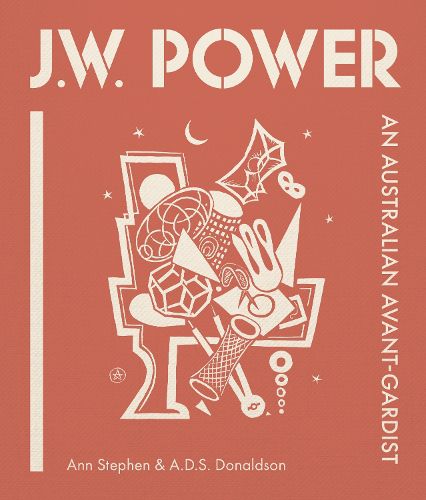Readings Newsletter
Become a Readings Member to make your shopping experience even easier.
Sign in or sign up for free!
You’re not far away from qualifying for FREE standard shipping within Australia
You’ve qualified for FREE standard shipping within Australia
The cart is loading…






J.W. Power was Australia's most accomplished interwar avant-garde artist. This first monograph of Power's remarkable nomadic career follows a journey from Australia to Britain, and then around the world. Having initially studied medicine in Sydney followed by service as a surgeon during WW1, Power gave up a medical career to study art in Paris in the early 1920s, first with the Brazilian Pedro Araujo and then with Fernand Leger. It was in London, however, that he first established his reputation as a modernist, exhibiting with the London Group and the 7 & 5 Society.
In the late 1920s, incorporating elements of the surreal and abstraction into his cubism, he reorientated his career to Paris, where he showed with the famed galleries run by Leonce Rosenberg and Jeanne Bucher. In 1931 he was central to the formation of the international artists group Abstraction-Creation, whose members included Mondrian, Kandinsky and his friend Otto Freundlich.
This book recognises and celebrates his life as an artist of the interwar European avant-garde.
$9.00 standard shipping within Australia
FREE standard shipping within Australia for orders over $100.00
Express & International shipping calculated at checkout
Stock availability can be subject to change without notice. We recommend calling the shop or contacting our online team to check availability of low stock items. Please see our Shopping Online page for more details.
J.W. Power was Australia's most accomplished interwar avant-garde artist. This first monograph of Power's remarkable nomadic career follows a journey from Australia to Britain, and then around the world. Having initially studied medicine in Sydney followed by service as a surgeon during WW1, Power gave up a medical career to study art in Paris in the early 1920s, first with the Brazilian Pedro Araujo and then with Fernand Leger. It was in London, however, that he first established his reputation as a modernist, exhibiting with the London Group and the 7 & 5 Society.
In the late 1920s, incorporating elements of the surreal and abstraction into his cubism, he reorientated his career to Paris, where he showed with the famed galleries run by Leonce Rosenberg and Jeanne Bucher. In 1931 he was central to the formation of the international artists group Abstraction-Creation, whose members included Mondrian, Kandinsky and his friend Otto Freundlich.
This book recognises and celebrates his life as an artist of the interwar European avant-garde.
These books will immerse you in beautiful and moving art from Australia and around the world!
Delve into visual art, fashion, architecture and design with these beautiful new releases, available at Readings.
Discover new nonfiction books at Readings, with biography, memoir, essays and analysis.